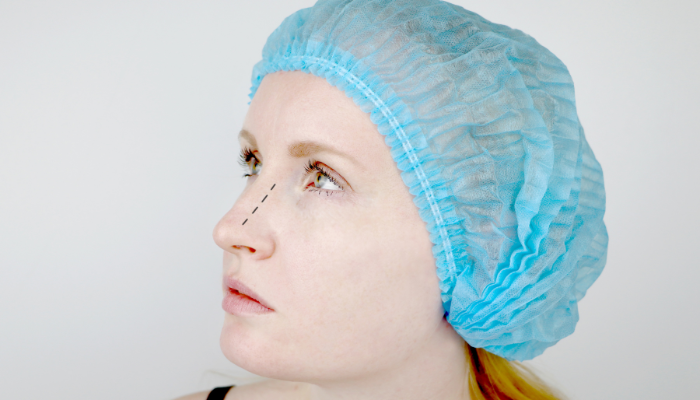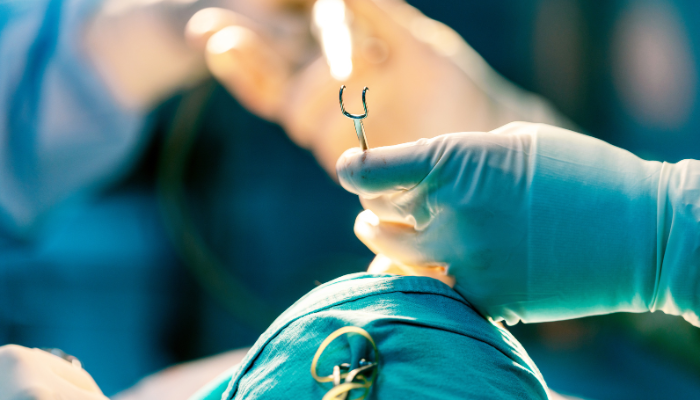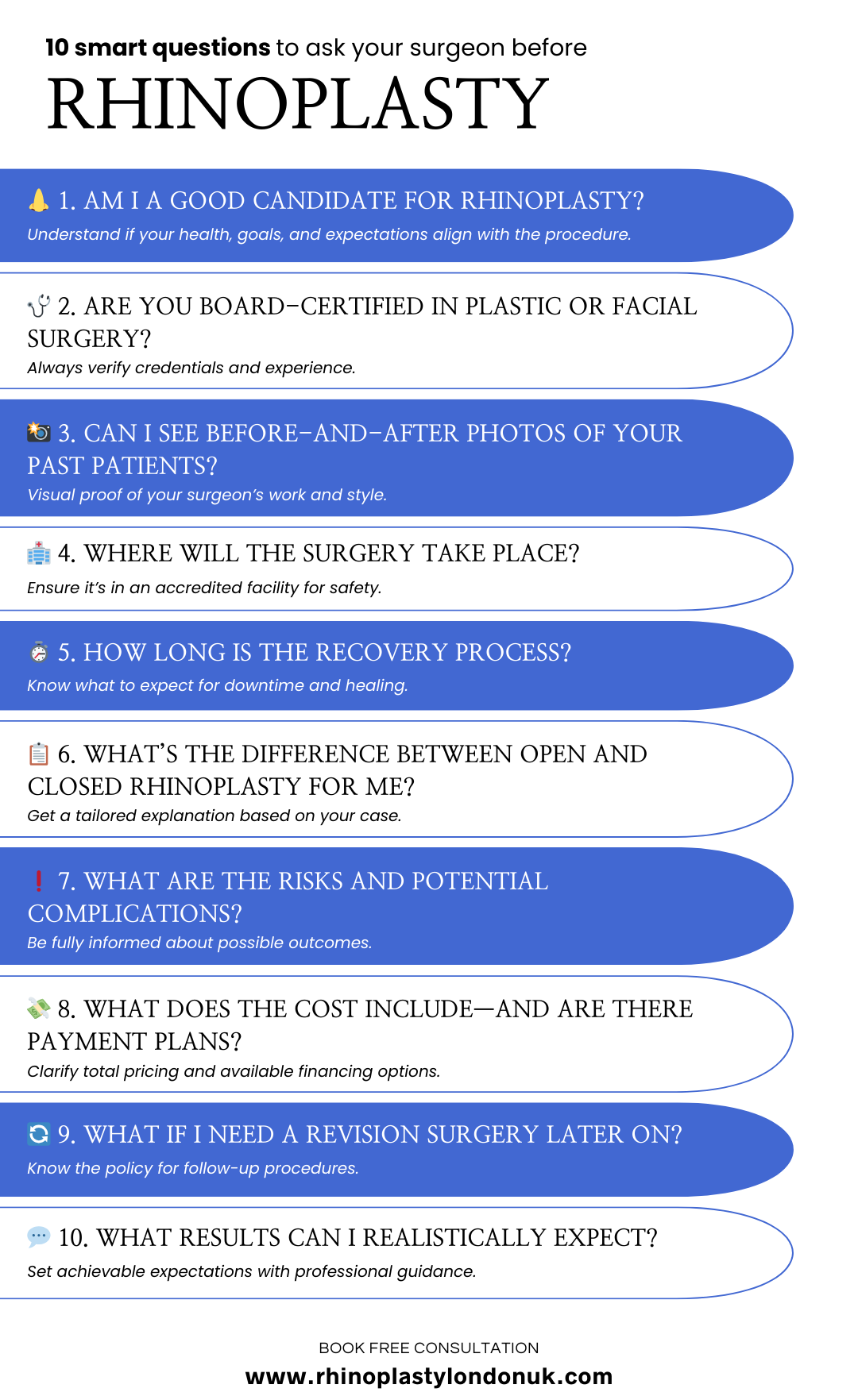One of the first big decisions people face when considering rhinoplasty is whether to go for a closed or open procedure. While both surgeries aim to reshape and enhance your nose, the approach, recovery time, and visibility of scars can be quite different.
In this post, we’re breaking down the basics—no medical jargon, no confusing terms—just clear, honest info to help you understand the difference between closed and open rhinoplasty.
Let’s dive in and uncover which option might be the best fit for your journey!
Key Takeaways
- Closed rhinoplasty involves incisions made only inside the nostrils, leaving no visible scars.
- This technique is often quicker and may lead to a shorter recovery time compared to open rhinoplasty.
- Limited visibility during closed rhinoplasty can make it harder for surgeons to achieve complex changes.
- Open rhinoplasty provides better access and visibility, which can be crucial for more detailed work.
- Choosing between the two methods depends on individual needs, the complexity of the case, and surgeon expertise.
Understanding Closed Rhinoplasty

How It Works
Closed rhinoplasty, also known as endonasal rhinoplasty, is a surgical technique where all incisions are made inside the nostrils. This means there’s no external cut on the columella (the bit between your nostrils).
The surgeon then works through these small incisions to reshape the bone and cartilage. It’s a bit like working through a keyhole, which can be pretty clever when it works well.
Advantages of a Closed Rhinoplasty
One of the biggest draws of closed rhinoplasty is that it leaves no visible external scar. For many people, this is a huge plus. Other potential benefits include:
- Potentially less swelling and bruising compared to open rhinoplasty.
- Shorter operating time, which can mean a quicker recovery.
- Ideal for minor corrections and refinements where extensive reshaping isn’t needed.
Closed rhinoplasty can be a great option if you’re looking for subtle changes and want to avoid any visible scarring. It’s less invasive, which often translates to a faster recovery.
Potential Drawbacks of a Closed Rhinoplasty
While closed rhinoplasty has its advantages, it’s not always the best choice for everyone. The main limitation is visibility. Because the surgeon is working through small incisions, their view of the nasal structure is restricted. This can make it more challenging to perform complex reshaping or address significant structural issues.
Other potential drawbacks include:
- Limited precision, especially when dealing with intricate nasal deformities.
- May not be suitable for patients requiring extensive cartilage grafting or reconstruction.
- Increased difficulty in correcting a severely deviated septum.
In short, while closed rhinoplasty can be a good option for some, it’s important to understand its limitations and whether it’s the right approach for your specific needs.
Exploring Open Rhinoplasty
Open rhinoplasty is another common approach to reshaping the nose. It involves a slightly different surgical technique compared to the closed method. Let’s take a look at how it works, its advantages, and potential drawbacks.
How It Works
With open rhinoplasty, a small incision is made on the columella, which is the strip of skin between your nostrils. This incision allows the surgeon to lift the skin and have full access to the underlying nasal structures. This direct visibility is a key characteristic of the open technique. It gives the surgeon a clear view of the bone and cartilage, making it easier to reshape and reconstruct the nose.
Advantages of an Open Rhinoplasty
Open rhinoplasty offers several benefits, particularly in complex cases:
- Enhanced Visibility: The open approach provides the surgeon with a complete view of the nasal anatomy, allowing for precise adjustments.
- Improved Accuracy: With better visibility, the surgeon can make more accurate changes to the shape and structure of the nose.
- Complex Corrections: Open rhinoplasty is often preferred for more complex cases, such as significant reshaping or reconstruction after trauma.
Potential Drawbacks of an Open Rhinoplasty

While open rhinoplasty has many advantages, there are a couple of potential downsides to consider:
- External Scar: The incision on the columella will leave a small scar. However, these scars usually heal well and become barely noticeable over time.
- Increased Swelling: Open rhinoplasty can sometimes result in more swelling after surgery compared to the closed technique. This swelling is temporary and will subside during the recovery period.
Open rhinoplasty is a powerful technique that allows for significant reshaping and reconstruction of the nose. While it involves a small external incision, the enhanced visibility and accuracy it provides can be invaluable in achieving the desired results.
Comparative Analysis of Techniques
Visibility and Precision
Okay, so when it comes to seeing what’s what during a nose job, open and closed rhinoplasty are pretty different. With open rhinoplasty, the surgeon makes a small cut on the bit between your nostrils, and that lets them lift the skin up.
This gives a really clear view of all the cartilage and bone. Closed rhinoplasty? Everything’s done through the nostrils. It’s like working in the dark a bit more, but some surgeons are brilliant at it. The choice really boils down to what needs fixing and what the surgeon feels most comfortable with.
Recovery Times
Right, let’s talk about getting back to normal. Generally, open rhinoplasty might mean a slightly longer recovery. Because of that little cut between your nostrils, there can be a bit more swelling and bruising. It’s not a huge difference, but something to keep in mind.
Closed rhinoplasty often leads to a quicker initial recovery, simply because there’s less disruption to the outside of your nose. But honestly, everyone’s different, and how quickly you heal depends on loads of things, not just the type of surgery.
Scarring and Aesthetic Outcomes
With open rhinoplasty, you’ll have a tiny scar on the columella (that bit between your nostrils). The good news is, it usually fades really well and becomes barely noticeable. Closed rhinoplasty, on the other hand, leaves no visible external scars, as all the work is done inside the nose.
Ultimately, the aesthetic outcome depends more on the surgeon’s skill and your nose’s starting point than on the technique itself. It’s about getting a result that looks natural and suits your face.
Both open and closed rhinoplasty can achieve fantastic results. The key is to have a good chat with your surgeon about what you want to achieve and to understand the pros and cons of each approach. Don’t be afraid to ask questions!
Choosing the Right Technique for You
Deciding between open or closed rhinoplasty isn’t something you need to stress about right away. The most important thing is finding a skilled and experienced surgeon. They’ll look at what you want to achieve, assess your nose’s structure, and then figure out which technique is best for you.
Factors Influencing Your Decision
Loads of things come into play when deciding on the right rhinoplasty technique. It’s not just about what you think you want. The surgeon will consider:
- The extent of the changes needed: Minor tweaks might be fine with a closed approach, but major work often needs the open technique.
- Your nasal anatomy: The thickness of your skin, the strength of your cartilage, and any existing asymmetry all matter.
- The surgeon’s expertise: Some surgeons are more comfortable and skilled with one technique over the other. It’s best to go with someone who’s confident in their ability to get you the best result.

Consultation with Your Surgeon
This is where the magic happens. A good consultation is all about open and honest communication. Your surgeon should:
- Listen carefully to what you want to achieve.
- Thoroughly examine your nose, both inside and out.
- Explain the pros and cons of each technique in your specific case.
- Answer all your questions, no matter how small they seem.
Don’t be afraid to ask questions! It’s your face, and you need to feel comfortable and informed about the whole process.
Personal Goals and Expectations
It’s vital to have realistic expectations. Rhinoplasty can make a big difference, but it’s not magic. Think about:
- What you realistically want to achieve: Are you after subtle refinement or a complete transformation?
- How the surgery will fit into your life: Consider the recovery time and any potential impact on your daily routine.
- Your overall facial harmony: The goal is a nose that looks natural and balanced with your other features, not a nose that looks ‘done’.
Common Reasons for Rhinoplasty
Rhinoplasty, or a ‘nose job’ as it’s often called, isn’t just about aesthetics. People consider it for a whole range of reasons, and it’s worth understanding the possibilities.
Cosmetic Enhancements
For many, the primary motivation is to improve the appearance of their nose. It might be about reducing a bump, refining the tip, or correcting asymmetry. The goal is often to achieve a better balance and harmony with other facial features. It’s about feeling more confident in your own skin.
Functional Improvements
Septoplasy addresses breathing difficulties. A deviated septum, for example, can restrict airflow and cause problems. Correcting these issues can significantly improve your quality of life. It’s not just about looks; it’s about function too. Some people also seek rhinoplasty to alleviate symptoms of sleep apnoea and snoring.
Addressing Previous Surgeries
Sometimes, a previous nose surgery might not have delivered the desired results, or perhaps complications arose. In these cases, a revision rhinoplasty can help to correct these issues and achieve a more satisfactory outcome. It’s about getting it right, even if it takes more than one attempt.
It’s important to have realistic expectations and to discuss your goals openly with your surgeon. They can assess your individual needs and recommend the most appropriate approach.
Long-Term Results and Considerations
Durability of Results
What happens next? It’s natural to wonder how long the changes will last. Generally, the results of rhinoplasty are considered permanent, but ageing and other factors can play a role.
The initial swelling will subside over several months, with the final shape becoming more defined over a year or so. It’s worth remembering that your nose will still be subject to the natural ageing process, which can subtly alter its appearance over many years.
Impact on Nasal Function
Rhinoplasty isn’t just about looks; it can also significantly improve how well your nose works. If you had breathing problems before the surgery, you should find them much better afterwards. However, it’s important to be aware that any surgery carries a small risk of affecting nasal function.
For example, there’s a chance of developing increased dryness or, very rarely, some minor breathing changes. These issues are usually manageable with simple treatments, but it’s something to discuss with your surgeon.
Patient Satisfaction and Feedback
Ultimately, the success of rhinoplasty comes down to how happy you are with the outcome. Most people report high levels of satisfaction, especially when their expectations are realistic and they’ve had good communication with their surgeon.
It’s a good idea to look at before-and-after photos and read reviews to get a sense of what to expect. Remember, everyone’s different, and your results will be unique to you.
It’s important to maintain realistic expectations about the outcome of rhinoplasty. While the procedure can bring about significant improvements, it’s not about achieving perfection but rather about creating a more harmonious balance with your other facial features. Open communication with your surgeon is key to ensuring you’re both on the same page regarding your goals.
Here’s a quick look at factors influencing long-term satisfaction:
- Realistic expectations
- Good communication with your surgeon
- Adherence to post-operative care instructions
Conclusion
When it comes to rhinoplasty, there’s no one-size-fits-all answer. Closed rhinoplasty offers a more discreet approach with no visible scarring and typically a faster recovery, making it ideal for minor reshaping. Open rhinoplasty gives surgeons better access and visibility—perfect for more complex changes or revisions.
The best choice depends on your personal goals, the complexity of your procedure, and your surgeon’s recommendation. The good news? You don’t have to figure it out alone. A qualified, experienced plastic surgeon will guide you through the options and help you decide what’s right for your unique face and needs.
Frequently Asked Questions
What is the main difference between closed and open rhinoplasty?
The key difference is how the surgery is performed. Closed rhinoplasty uses incisions inside the nostrils, so there are no visible scars. Open rhinoplasty involves a small cut on the outside of the nose, which allows the surgeon to see the structures better.
Which type of rhinoplasty is better for me?
It depends on what changes you want to make. If you need minor adjustments, closed rhinoplasty might be enough. But if you want more significant changes, open rhinoplasty is usually better because it gives the surgeon a clearer view.
Will there be visible scars after the surgery?
With closed rhinoplasty, there are no visible scars since all cuts are made inside the nostrils. Open rhinoplasty leaves a small scar on the underside of the nose, but skilled surgeons often make it hard to see once healed.
How long does recovery take for each type?
Closed rhinoplasty generally has a shorter recovery time, often allowing you to return to normal activities sooner. Open rhinoplasty may take longer due to the more invasive nature of the surgery.
Are there any risks involved with either procedure?
Both types of rhinoplasty come with risks, such as infection or breathing problems. However, if done by a qualified surgeon, both methods are considered safe.
How do I choose the right surgeon for my rhinoplasty?
Look for a surgeon with experience in both techniques. It’s important to discuss your goals and concerns with them, so they can help you decide which method is best for your needs.





